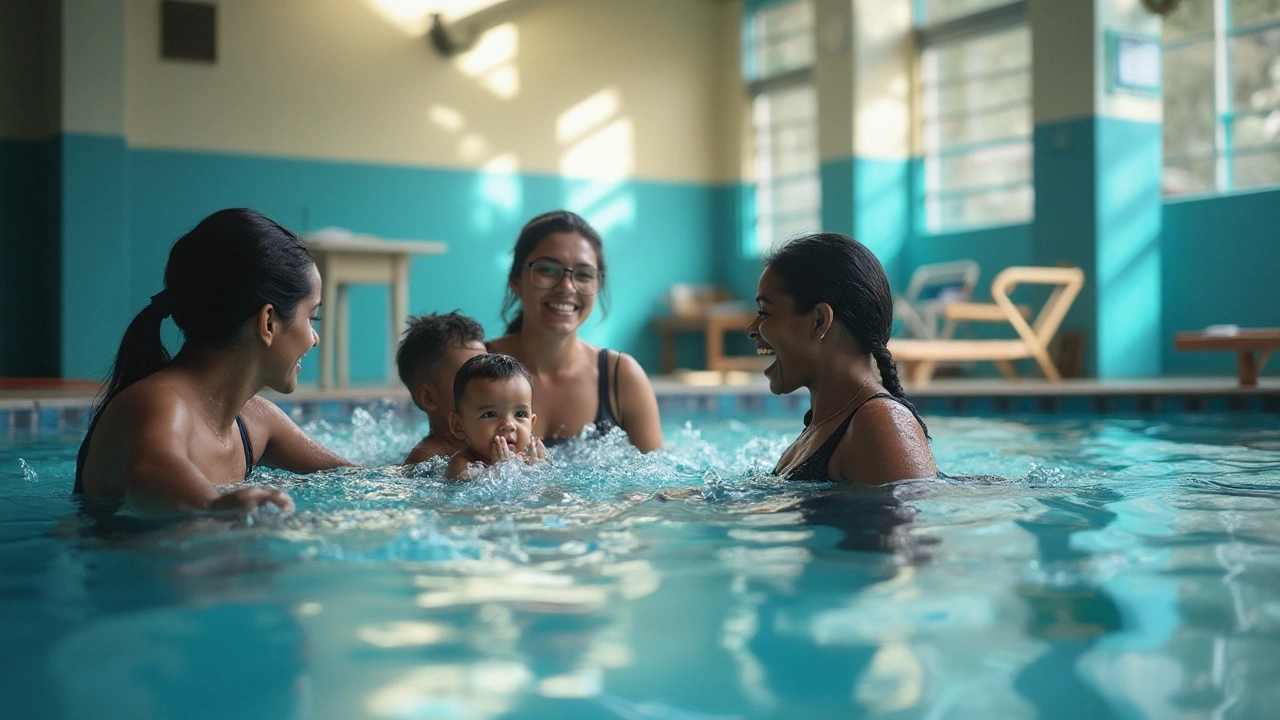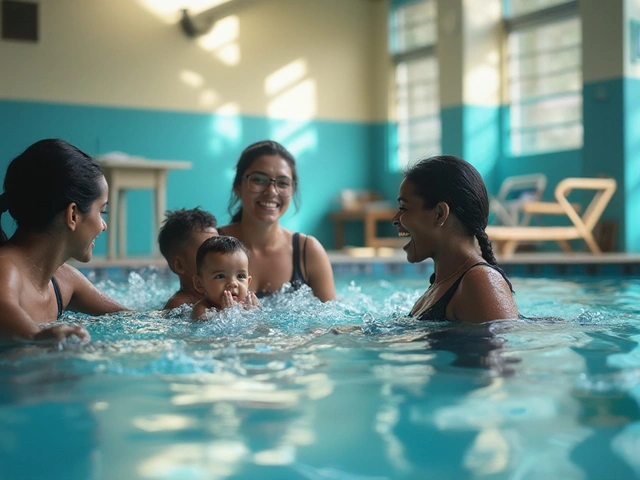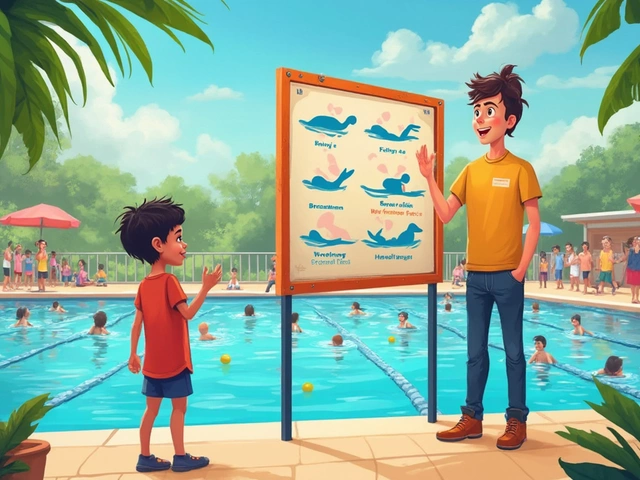There's a false notion that swimming is an ability best acquired in childhood, yet learning to swim as an adult is not only possible but also deeply rewarding. The timeline for mastering swimming varies for each individual, depending on factors like physical fitness, prior water experience, and mental readiness.
Many adults find themselves stepping back from the edge of the pool due to fear or embarrassment, but it’s essential to address these feelings patiently. With the right mindset, guidance, and a good pair of goggles, anyone can learn to float, kick, and glide through water confidently.
This article unpacks the journey toward swimming mastery, tackling common hurdles and unveiling strategies that bring the goal within reach. Whether your aim is to beat the heat, get fit, or enjoy a beach vacation, discovering how to swim opens up a world of aquatic adventures.
- Understanding the Learning Curve
- Challenges Adults Face
- Discovering Effective Techniques
- The Role of Consistent Practice
- Building Water Confidence
Understanding the Learning Curve
When tackling the challenge of learning to swim as an adult, it's crucial to comprehend the learning curve that accompanies this pursuit. For many adults, stepping into the pool represents an intersection of excitement and apprehension. This dichotomy is entirely natural and stems from the myriad physical and psychological factors influencing one's progress in learning to swim. Initially, it may feel like the water is working against you, but gradually, with perseverance, it becomes a supportive medium that propels you forward.
Swimming skills develop through consistent practice and gradual exposure to aquatic settings. An adult's journey begins with familiarization with water, understanding buoyancy, and acquiring basic techniques such as floating and flutter kicking. Research indicates it typically takes between 15 to 25 hours of instruction spread over several weeks for an adult to gain basic swimming proficiency. As skills are honed and confidence builds, the water becomes less intimidating, paving the way for more complex strokes like freestyle and backstroke. Recognition of this progression is essential for maintaining motivation and patience throughout the learning process.
The lack of childhood immersion in water environments often places adults at a disadvantage when first starting. Psychologist Albert Bandura, well-known for his work on social learning theory, noted, "Self-efficacy is a major determinant in the successful acquisition of motor skills."
He asserted that one's belief in their ability directly impacts their success rate.Therefore, building a strong sense of self-efficacy is as vital as mastering the physical aspects of swimming. Establishing a supportive learning environment with guidance from seasoned swim instructors and encouragement from peers plays an indispensable role in bolstering this belief. As adults witness incremental improvements, their assurance in their ability to conquer water becomes reinforced.
While everyone progresses at their own speed, certain foundational concepts tend to remain consistent across learners. Essential movements such as breathing techniques, arm strokes, and leg kicks form the backbone of all swimming styles. Unlearning any misconceptions and embracing these movements enables an individual to build a solid skill set over time. By setting clearly defined milestones and maintaining realistic expectations, adult learners are less likely to become frustrated with a perceived lack of progress.
Pacing the whole experience appropriately is vital. Taking time to celebrate each small victory within the learning process keeps morale high and fear at bay. Adult learners should remember that the path to swimming proficiency involves not only physical exertion but also a mental journey toward understanding and comfort within water—a balance that ultimately leads to unshakable confidence and lifelong swimming skills. By appreciating the nuances of the learning curve, adults can dispel myths about their limitations, embracing the fulfilling path to mastering adult swimming lessons.
Challenges Adults Face
Learning to swim as an adult is often associated with a set of unique challenges that can be quite different from those experienced by younger learners. The most significant obstacle is usually the fear of water, a deeply ingrained apprehension that might originate from a past, unpleasant swimming experience or simply the fear of the unknown. This fear can manifest as stress or anxiety whenever faced with deeper waters. It is crucial to acknowledge this fear and approach it with compassion and patience to move forward in the swimming journey.
Another challenge adults might encounter is self-consciousness or embarrassment, especially when learning in a group setting or public pool. Many adults fear judgment or feel uncomfortable with their bodies, which can hinder the learning process. As such, it’s important for adult learners to find a supportive environment where they can focus on their progress rather than comparing themselves to others. Private lessons or adult-specific swim classes often help mitigate these feelings.
Time constraints can also play a significant role in delaying an adult’s swimming education. Unlike children, adults have numerous commitments ranging from careers to family responsibilities, making it difficult to commit to regular swim lessons. Therefore, scheduling practice sessions and lessons is as essential as the lessons themselves. Short but consistent practice can make all the difference. According to the US Masters Swimming organization, "Swim just a couple of times a week and improvement is inevitable."
Physical limitations or a lack of physical fitness can pose difficulties as well. Some adults might not have engaged in regular physical activity prior to learning to swim, resulting in less stamina and muscle tone needed for swimming. This can be addressed by gradually building fitness levels through complementary exercises like walking, stretching, or yoga, which improve flexibility and strength used in swimming.
Additionally, some adults might have difficulty coordinating their limbs and breathing techniques while trying to float or do strokes. This can lead to frustration and discouragement. Here, learning to swim becomes a lesson in persistence and learning to balance between perseverance and enjoyment. By staying playful and positive, adult learners can find joy in small achievements, steadily working towards their goals.
Environmental factors can be another deterrent. The availability of conveniently located swimming facilities, suitable pool temperatures, and clean, appealing environments can impact motivation and comfort levels. It is advisable to find a place that feels safe and inviting, as this can hugely influence the frequency of practice and enthusiasm for tackling each swimming session.
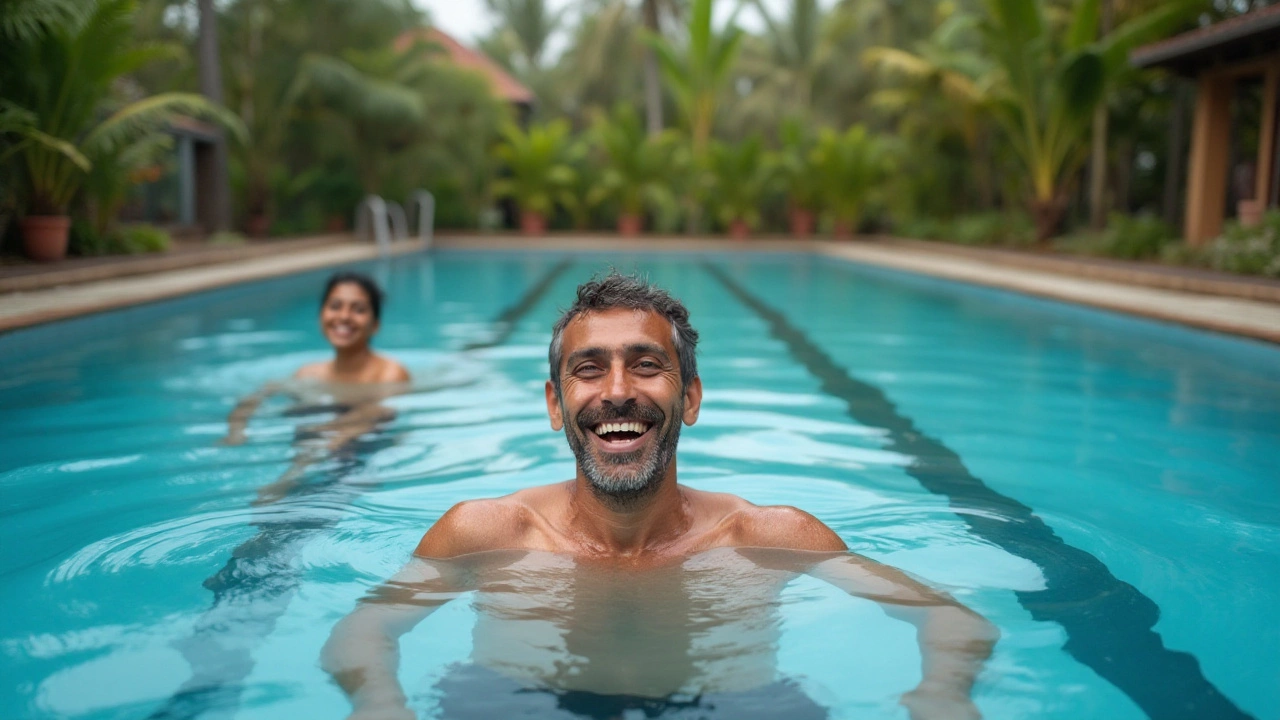
Discovering Effective Techniques
Learning to swim as an adult can be a daunting endeavor, but there are plenty of effective techniques that can make this journey smoother. One of the most recommended methods by experts is breaking down the swimming process into manageable chunks. Start with gaining a comfortable horizontal position in the water — something as simple as practicing floating on your back can lay a significant foundation. Floating allows your body to become familiar with water buoyancy and enhances your overall sense of balance. Once you feel relaxed with your float, introduce gentle kicking to propel yourself forward. This helps build muscle memory essential for efficient swimming. Many skilled instructors often emphasize the importance of rhythm and breathing, encouraging learners to breathe out into the water to avoid exhaustion.
Another highly effective approach involves utilizing swimming aids. Items like kickboards or swim fins can offer support while teaching critical movement patterns. Kickboards, for instance, allow you to isolate and work on your leg technique without worrying about what your arms are doing. Swim fins help improve ankle flexibility and increase confidence with their added speed and support. Implementing these tools can profoundly accelerate your learning process. One of the most significant benefits of swimming with aids is that it helps promote good body alignment, reducing the likelihood of developing any bad habits.
The technological revolution hasn't left swimming behind; many adults are turning to mobile apps and virtual pools for guided lessons outside of traditional classroom settings. Apps like MySwimPro and Swim Coach allow users to access structured swim workouts and track progress with ease. These tools often offer video demonstrations, showcasing ideal form and predicting common mistakes. Technology facilitates visualization and personal benchmarks, which keep swimmers motivated and on track. Another popular strategy amongst tech-savvy swimmers is using action cameras or underwater cameras to capture personal swimming sessions, offering unique insights into your stroke efficiency when reviewed.
"Being able to reflect on one’s own swimming style through videos provides a mirror into potential improvements and opportunities," shares Shane Gould, an Australian former freestyle swimmer and three-time Olympic gold medalist.
Practicing regularly in groups can also yield impressive results. A peer setting simulates a supportive environment, encouraging feedback and swim buddy systems, which elevate motivation levels and commitment. Adult swim groups provide structured training sessions, often led by seasoned coaches who understand common struggles faced by adults in the water. Whether it's joining a local Masters swimming club or an informal community pool group, the camaraderie significantly enhances learning, making swimming not just a skill but an engaging social activity too.
Having the willingness to step out of the traditional pool setting is yet another technique many adults find beneficial. Open water swimming is gaining traction, offering a new perspective on swimming experience. Oceans, lakes, and rivers present unpredictable variables, challenging the swimmer to adapt and react dynamically. By practicing in open water, swimmers improve their adaptability and learn to handle different water conditions with confidence. This method has the added benefit of doubling as a meditative escape, allowing swimmers to connect deeper with nature and break the routine of chlorinated waters. With these techniques, adults can venture into the realm of swimming, discovering not only a new skill but a new world of experiences.
The Role of Consistent Practice
Taking the plunge into swimming as an adult requires a commitment to consistency. Without it, skills remain shaky and confidence, elusive. Regular practice plays a pivotal role in acquiring and honing swimming skills, transforming unsure strokes into fluid motions. Psychologically, repeated exposure to the water helps dismantle barriers such as fear, creating a space where relaxation replaces anxiety. When you swim frequently, familiarity with the water builds, leading to a rhythmic understanding of your body's buoyancy and balance. Muscles adapt to the new activity, building memory that helps in maneuvering through the currents, whether you are practicing freestyle or backstroke. The body grows accustomed to coordinating limb movements and breathing techniques, all of which are vital to swim efficiently.
For an adult learner, earmarking specific days for pool visits provides the regularity that accelerates progress. A common misconception is that more time you spend in the water per session, the better the progress; however, short, consistent sessions generally yield better results than infrequent marathon swims. Establishing a routine can help embed swimming into your lifestyle, turning each session into a stepping stone towards achieving aquatic milestones. Adult swimming lessons often recommend practicing at least two to three times a week to see tangible results. This is echoed by numerous swimming instructors who affirm that regular immersions and guided lessons help to steadily reinforce progress.
Engaging consistently doesn’t mean monotonous repetition. Humans thrive on variation; the same applies to swimming. You might begin by working on single skills, like breathing on alternate sides or mastering a flutter kick, before integrating them into a coherent stroke. Once these skills are recognizable, introduce challenges by increasing lap counts or experimenting with different swim styles. Monitoring improvements, either through a diary or utilizing swim apps, provides motivation, showing how far you've come since starting your aquatic journey. To keep track of your progress, consider setting specific goals for each session, such as improving freestyle techniques or increasing breath control.
"Practice isn't the thing you do once you're good. It's the thing you do that makes you good." - Malcolm Gladwell
Progress is not linear, and there will be days where it feels like nothing is going right. During such instances, strive to get back into the water instead of losing momentum or motivation. Recognizing the tough days as temporary - and part of the larger process - encourages perseverance. By associating practice with enjoyment, like playing with an underwater frisbee or swimming with others, you create enjoyable experiences associated with water, which seamlessly keeps the practice consistent and beneficial.
Once the foundation is solid, the benefits of continuous practice extend beyond the physical domain. As swimming becomes second nature, the focus shifts from merely surviving in water to relishing the experience, enhancing your overall confidence and joy. Whether your aim is to compete in a triathlon or enjoy family beach outings, consistent practice is the cornerstone that transforms adult learners into adept swimmers who savor every stroke.
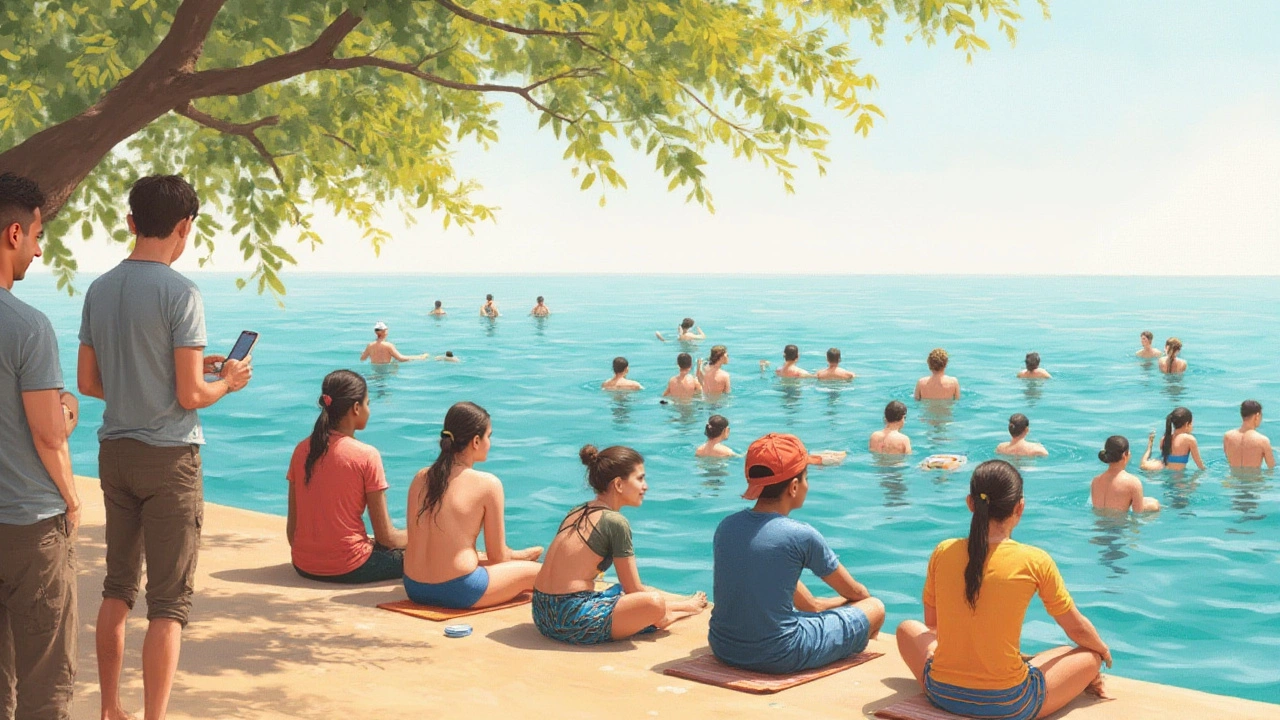
Building Water Confidence
Learning to swim as an adult can be a journey of overcoming fear and embracing new sensations, but the key to success lies in building water confidence. Many adults encounter the barrier of fear, which often stems from past traumatic experiences or simply a lack of familiarity with the aquatic environment. Interestingly, studies have shown that around 37% of adults have some level of fear of water, which is not only common but entirely manageable with the right strategies.
A crucial element in building water confidence is acclimatization. Begin by simply spending time in the pool without any pressure to perform specific techniques. Feel the water against your skin, notice how it supports your body, and practice simple breathing exercises. Breathing deeply and slowly while floating on your back can tremendously reduce anxiety, as it helps in learning to trust water to support your weight. This relaxation technique is a stepping stone to conquering fear.
Guided instruction by a skilled instructor can also make a significant difference. Professional swim instructors are trained to help adults ease into swimming by developing customized plans that focus on individual comfort levels and progress. They offer techniques that incrementally develop one's confidence, such as starting with wearing floating aids and moving gradually towards unaided swimming. According to the American Red Cross, structured lessons can boost confidence as they allow learners to progress at their own pace, building essential skills in a safe, supportive environment.
Stephen Hemenway, a renowned swim coach, once said,
"Every stroke you take conquers another wave of fear. Embrace each part of the journey gently."Developing a positive mindset can be learned just as much as physical swimming skills. The brain and emotions are as much a part of swimming lessons as the limbs are, and embracing progression rather than perfection helps in nurturing self-assurance and confidence.
Introducing some playfulness into the learning process can also significantly improve water confidence. Engaging in water games, practicing buoyancy by balancing different objects on water, or trying synchronized swimming moves with friends can make the water feel less daunting. The presence of social support lends encouragement, making the experience more fulfilling and enjoyable. Whether through professional classes or peer interactions, everyone can develop the courage to kick-start and maintain this moving journey.
